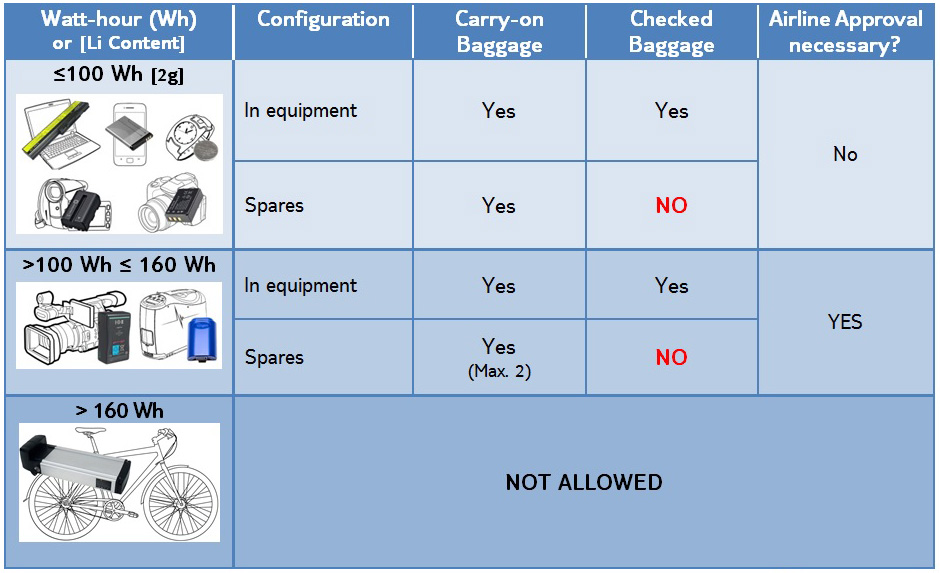- FAQ
- Arrival and Departure
- Baggage.
- Which batteries am I allowed to take with me?
Which batteries am I allowed to take with me?
A dry AA(A) battery (type Alkaline, NiMh, NiCd,…) for personal small items such as a pocket torch or a radio are allowed as long as they are inside the device or enclosed in a strong package.
Nowadays most electronic devices are powered by lithium batteries (e.g. laptops, tablets, smartphones, cameras, medical devices, etc.). Whether a lithium battery can be carried by air or not depends on its configuration and either Watt-hour (Wh) rating (for rechargeable) or Lithium Content (LC) (for non-rechargeable).
The Wh-rating can be found on the battery itself or in the product manual of the item*.
If devices are carried in hold baggage, measures must be taken to protect the device from damage and to prevent unintentional activation; and the device must be completely switched off (not in sleep or hibernation mode).
Loose batteries and powerbanks should be individually protected against short circuits by carrying them in their original packaging, with terminals taped or in a plastic bag in hand luggage.
Airline permission is always required for medical devices. Info see section Baggage - Medical baggage.
More information can be found in the table on lithium batteries and required airline permissions..
*To convert Amp-hours (Ah) to Watt-hour (Wh): multiply Ah x Voltage

